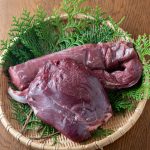The largemouth bass (Micropterus salmoides) is a popular freshwater fish native to North America, particularly known for its role in recreational fishing. While largemouth bass is primarily associated with sport fishing rather than culinary traditions, it is still occasionally consumed as food, especially in regions where it is abundant and considered a local delicacy.
Cuisine associated with largemouth bass tends to vary depending on regional preferences, culinary traditions, and personal tastes.
Here are some common ways in which largemouth bass might be prepared and enjoyed:
- Grilled or Pan-Seared: Grilling or pan-searing largemouth bass fillets is a popular method that allows the natural flavors of the fish to shine. The fillets can be seasoned with herbs, spices, and citrus for added flavor before cooking. A simple marinade or rub can enhance the taste without overpowering the delicate flavor of the fish.
- Fried: Largemouth bass can be breaded and fried to create a crispy exterior while keeping the flesh tender and moist. The fish is typically dredged in seasoned flour or cornmeal before frying in hot oil until golden brown. This method is often used in southern cuisine and pairs well with hush puppies, coleslaw, and tartar sauce.
- Baked or Roasted: Baking or roasting largemouth bass in the oven is another popular cooking method that requires minimal effort. The fish can be stuffed with herbs, garlic, and citrus slices to infuse flavor from the inside out. Baking or roasting allows for even cooking and produces moist, flaky fish that can be served with a variety of side dishes such as roasted vegetables or rice pilaf.
- Sous-Vide: Sous-vide cooking is a technique that involves cooking food in a precisely controlled water bath at a consistent low temperature. Largemouth bass can be cooked sous-vide to achieve perfectly tender and moist results. The fish is typically seasoned and vacuum-sealed before being cooked in the water bath, resulting in a delicate texture and enhanced flavor.
- Ceviche: Largemouth bass can also be enjoyed raw in dishes such as ceviche, a popular Latin American preparation. In ceviche, raw fish is marinated in citrus juice, such as lime or lemon, which “cooks” the fish by denaturing the proteins. The fish is typically combined with ingredients such as onions, tomatoes, cilantro, and chili peppers to create a refreshing and flavorful dish.
- Smoked: Smoking largemouth bass adds a rich, smoky flavor that complements the fish’s natural sweetness. The fish can be brined or marinated before being smoked over low heat using wood chips or pellets. Smoked largemouth bass can be enjoyed on its own as a main dish or incorporated into recipes such as dips, spreads, or salads.
When preparing largemouth bass for consumption, it’s essential to follow proper handling and cooking techniques to ensure food safety. Like all fish, largemouth bass should be fresh and properly cleaned before cooking to prevent foodborne illness. Additionally, adhering to local fishing regulations and sustainability guidelines is important to help preserve fish populations and ecosystems for future generations to enjoy.

Leave a Reply